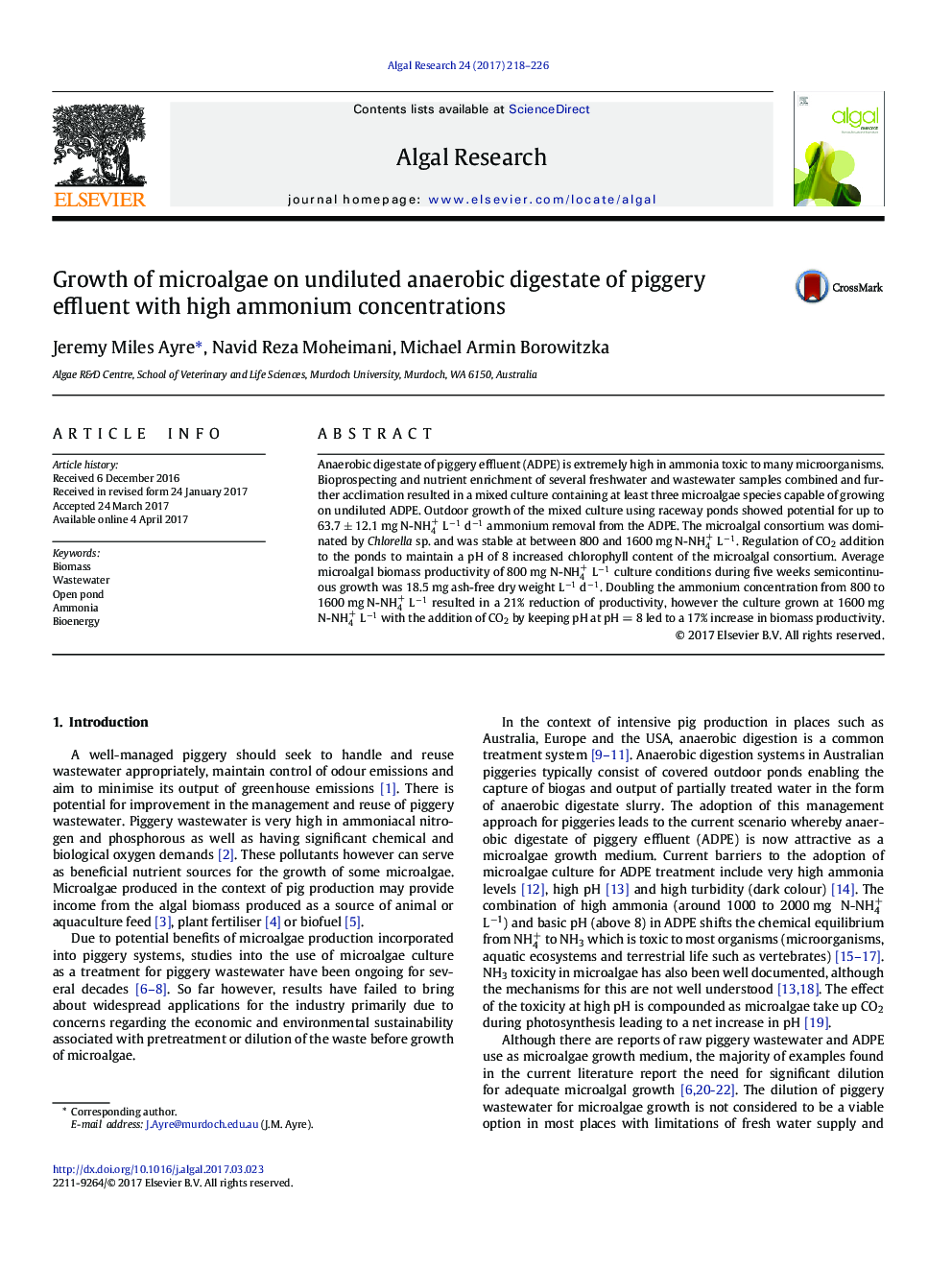| Article ID | Journal | Published Year | Pages | File Type |
|---|---|---|---|---|
| 5478452 | Algal Research | 2017 | 9 Pages |
â¢Enrichment of a mixed microalgal culture capable of growth on undiluted anaerobic digestion of piggery effluent (ADPE)â¢Successful growth of the culture on undiluted ADPE over 16 weeks, outdoors in raceway pondsâ¢Semicontinuous microalgae growth of the culture over 5 weeks at up to 1600 mg N-NH4+ L â1â¢Addition of CO2 by keeping the pH at pH = 8 improved productivity and chlorophyll content of the biomass
Anaerobic digestate of piggery effluent (ADPE) is extremely high in ammonia toxic to many microorganisms. Bioprospecting and nutrient enrichment of several freshwater and wastewater samples combined and further acclimation resulted in a mixed culture containing at least three microalgae species capable of growing on undiluted ADPE. Outdoor growth of the mixed culture using raceway ponds showed potential for up to 63.7 ± 12.1 mg N-NH4+ L â1 d â1 ammonium removal from the ADPE. The microalgal consortium was dominated by Chlorella sp. and was stable at between 800 and 1600 mg N-NH4+ L â1. Regulation of CO2 addition to the ponds to maintain a pH of 8 increased chlorophyll content of the microalgal consortium. Average microalgal biomass productivity of 800 mg N-NH4+ L â1 culture conditions during five weeks semicontinuous growth was 18.5 mg ash-free dry weight L â1 d â1. Doubling the ammonium concentration from 800 to 1600 mg N-NH4+ L â1 resulted in a 21% reduction of productivity, however the culture grown at 1600 mg N-NH4+ L â1 with the addition of CO2 by keeping pH at pH = 8 led to a 17% increase in biomass productivity.
